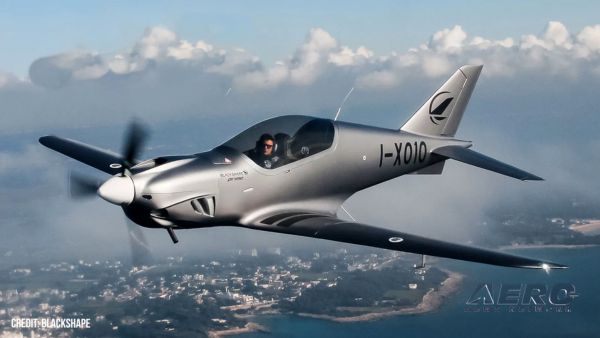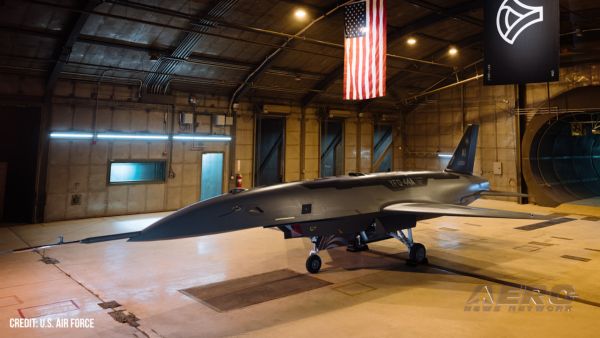Fri, May 09, 2025
Ambitious Plan Updates With State-Of-The-Art Components In All Areas
U.S. Department of Transportation Secretary Sean P. Duffy revealed an ambitious plan to build a brand new, state-of-the-art air traffic control system that will modernize every area of the system’s infrastructure and every component in those areas. The plan is backed by the broadest coalition of aviation groups ever seen.

The plan outlines a full completion timeline of about 4 years, by FY2028, and the overall goal is to transform the U.S. air traffic control system from its current antiquated state to a modern system for today’s level of air travel and into the future, while accommodating new entrants to the system including drones, advanced air mobility, and commercial space development and exploration operations.
Duffy’s plan proposes to build a system for the future: Core infrastructure in facilities will be replaced, to include radar, software, hardware, and telecommunications networks that incorporate the latest technologies to reduce outages, improve efficiency, and reinforce safety.
The plan comprises four areas of infrastructure components:
Communications
- Telecommunications (Timeline: 2025-2028)
- Radios (Timeline: 2025-2027)
- Voice Switch (Timeline: 2025-2028)
Surveillance
- Airborne (Timeline: 2025-2027)
- Surface (Timeline: 2025-2028)
- Surface Awareness Initiative (Timeline: 2025-2027)
- ADS-B in the Caribbean
Automation Programs
- Flow Management and Data Services (Timeline: 2025-2028)
- Alaska Automation Capability (Timeline: 2025-2028)
- Terminal Flight Data Manager (Timeline: 2025-2028)
- DataComm (Timeline: 2025-2027)
- Enhanced Information Display System (Timeline: 2025-2027)
- Common Automation Platform (Timeline: 2025-2028)

Facilities
- ARTCCs (Timeline: FY2025-FY2028)
- Tower/TRACON: (FY2025-2028)
-
Alaska
- 50 AWOS locations
- 60 VWOS locations
- 64 sites weather cameras
- New York Area
- To have a better flow of air traffic into the most complex airspace, the FAA is looking to pilot best equipped best served to JFK and LGA, where starting in December 2025 to fly into these two airports between 3-8pm the aircraft must be equipped with MARS.
Critical actions will be:
- Replacing antiquated telecommunications: with new fiber, wireless and satellite technologies at over 4,600 sites, 25,000 new radios and 475 new voice switches.
- Replacing 618 radars which have gone past their life cycle.
- Addressing runway safety by increasing the number of airports with Surface Awareness Initiative (SAI) to 200.
- Building six new air traffic control centers for the first time since the 1960s and replacing towers and TRACONs.
- Installing new modern hardware and software for all air traffic facilities to create a common platform system throughout towers, TRACONs and centers.
- Addressing the challenges that face Alaska by adding 174 new weather stations.
More News
Aero Linx: International Federation of Airworthiness (IFA) We aim to be the most internationally respected independent authority on the subject of Airworthiness. IFA uniquely combi>[...]
Ultrahigh Frequency (UHF) The frequency band between 300 and 3,000 MHz. The bank of radio frequencies used for military air/ground voice communications. In some instances this may >[...]
A Few Questions AND Answers To Help You Get MORE Out of ANN! 1) I forgot my password. How do I find it? 1) Easy... click here and give us your e-mail address--we'll send it to you >[...]
From 2019 (YouTube Edition): Learning To Paint Without Getting Any On Your Hands PPG's Aerospace Coatings Academy is a tool designed to teach everything one needs to know about all>[...]
Also: Sustainable Aircraft Test Put Aside, More Falcon 9 Ops, Wyoming ANG Rescue, Oreo Cookie Into Orbit Joby Aviation has reason to celebrate, recently completing its first full t>[...]
 ANN's Daily Aero-Linx (05.06.25)
ANN's Daily Aero-Linx (05.06.25) ANN's Daily Aero-Term (05.06.25): Ultrahigh Frequency (UHF)
ANN's Daily Aero-Term (05.06.25): Ultrahigh Frequency (UHF) ANN FAQ: Q&A 101
ANN FAQ: Q&A 101 Classic Aero-TV: Virtual Reality Painting--PPG Leverages Technology for Training
Classic Aero-TV: Virtual Reality Painting--PPG Leverages Technology for Training Airborne 05.02.25: Joby Crewed Milestone, Diamond Club, Canadian Pilot Insurance
Airborne 05.02.25: Joby Crewed Milestone, Diamond Club, Canadian Pilot Insurance



